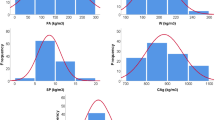Abstract
Geopolymers, also known as alkali-activated pozzolan cements, have been recently gaining attention as an alternative binder for concrete because of its potential to lower the environmental impact of construction, to utilize waste as raw materials of alumino-silicates, and to enhance the material performance. In this study, engineering properties of lightweight geopolymer-based material produced from the ternary blend of red mud (RM) waste, rice husk ash (RHA) and diatomaceous earth (DE) are optimized with statistical multi-response surface method. Using the augmented simplex lattice mixture design, ten mix proportions of RM, RHA and DE were prepared and mixed with 15 % (by weight of the solid) water glass solution to produce the specimens. After 28 days of curing at room temperature, these specimens were tested for compressive strength (MPa), volumetric weight (kg/m3), and water absorption (kg/m3) including the mass loss (%), volumetric shrinkage (%) and change in compressive strength (%) when subjected to an elevated temperature of 1000 °C. By using the desirability function approach on multiple responses, the optimum ternary blend was found to be 14.5 % RM, 67.2 % RHA and 18.3 % DE to obtain the desirable engineering properties of a lightweight heat resistant material. Using this mix proportion, confirmatory runs were also done and the experimental values were found to be in good agreement with the predicted values.










Similar content being viewed by others
References
Bentur, A.: Cementitious materials-nine millennia and a new century: past, present, and future. J. Mater. Civ. Eng. 14, 2–22 (2002)
Worrell, E., Bernstein, L., Roy, J., Price, L., Harnisch, J.: Industrial energy efficiency and climate change mitigation. Energy Effic. 2, 109–123 (2009)
Hasanbeigi, A., Morrow, W., Masanet, E., Sathaye, J., Xu, T.: Energy efficiency improvement and CO2 emission reduction opportunities in the cement industry in China. Energy Policy 57, 287–297 (2013)
Mahasenan, N., Smith, S., Humphreys, K.: The cement industry and global climate change: current and potential future cement industry CO2 emissions. Greenh. Gas Control Technol. II, 995–1000 (2003)
Shi, C., Jinénez, A.F., Palomo, A.: New cements for the 21st century: the pursuit of an alternative to Portland cement. Cem. Concr. Res. 41, 750–763 (2011)
Ogunkunle, C.O., Fatoba, P.O.: Pollution loads and the ecological risk assessment of soil heavy metals around a mega cement factory in Southwest Nigeria. Pollut. J. Environ. Study 22(2), 487–493 (2013)
Worrell, E., Martin, N., Price, L.: Potentials for energy efficiency improvement in the US cement industry. Energy 25(12), 1189–1214 (2000)
Phair, J.W.: Green chemistry for sustainable cement production and use. Green Chem. 8, 763–780 (2006)
Nielsen, C.V., Glavind, M.: Danish experiences with a decade of green concrete. J. Adv. Concr. Technol. 5(1), 3–12 (2007)
Juenger, M.C.G., Winnefeld, F., Provis, J.L., Ideker, J.H.: Advances in alternative cementitious binders. Cem. Concr. Res. 1, 1232–1243 (2011)
Davidovits, J.: Geopolymer Chemistry and Application, 3rd edn. Institut Géopolymère, Saint-Quentin (2011)
Van Deventer, J.S.J., Provis, J.L., Duxson, P.: Technical and commercial progress in the adoption of geopolymer cement. Miner. Eng. 29, 89–104 (2012)
Kong, D.L.Y., Sanjayan, J.G.: Effect of elevated temperatures on geopolymer paste, mortar and concrete. Cem. Concr. Res. 40, 334–339 (2010)
Dimas, D.D., Giannaopoulou, I.P., Panias, D.: Utilization of alumina red mud for synthesis of inorganic polymeric materials. Miner. Process. Extr. Metall. Rev. 30, 211–239 (2009)
Xu, H., van Deventer, J.S.J.: Effect of source materials on geopolymerization. Ind. Eng. Chem. Res. 42(8), 1698–1706 (2003)
Zhang, G., He, J.: Geopolymerization of red mud and rice husk ash and potentials of the resulting geopolymeric products for civil infrastructure applications. In: Developments in Strategic Materials and Computational Design II, pp. 45–52. The American Ceramic Society (2011)
Klauber, C., Gräfe, M., Power, G.: Bauxite residue issues: II. Options for residue utilization. Hydrometallurgy 108, 11–32 (2011)
Siddique, R., Khan, M.I.: Supplementary Cementing Materials. Engineering Materials, vol. 5, pp. 231–281. Springer, Berlin (2011)
Kapur, P.C.: Thermal insulations from rice husk ash, an agricultural waste. Ceram. Int. 6(2), 75–78 (1980)
Indian Minerals Yearbook 2011 (Part II): Diatomite (Advanced Release), 50th edn. Government of India, Ministry of Mines, Indian Bureau of Mines, Nagpur (2012)
Do, Q.M., Nguyen, H.T.: Porous brick from Diatomite. J. Sci. Technol. 76, 123–127 (2010)
Yilmaz, B., Ediz, N.: The use of raw and calcined diatomite in cement production. Cem. Concr. Compos. 30, 202–211 (2008)
Pimraksa, K., Chindaprasirt, P., Rungchet, A., Sagoe-Crentsil, K., Sato, T.: Lightweight geopolymer made of highly porous siliceous materials with various Na2O/Al2O3 and SiO2/Al2O3 ratios. Mater. Sci. Eng. 528, 6616–6623 (2011)
Nguyen, H.T., Promentilla, M.A.B., Gallardo, S.M., Bacani, F.T., Hinode, H., Do, Q.M., Do, M.H., and Pham, T.K.: Producing geopolymer-based materials from a ternary blend of red mud, rice husk ash and diatomaceous earth. In: 20th Regional Symposium on Chemical Engineering (RSCE 2013)—Emerging Challenges in Chemical Engineering Research, Education, and Industries, Bohol, November 2013, G6 (2013)
Nguyen, H.T., Do, Q.M., Hinode, H., Gallardo, S.M., Bacani, F.T., Promentilla, M.A.B.: Development of geopolymer-based materials from a ternary blend of red mud, rice husk ash and diatomaceous earth using the statistical mixture design modeling approach. J. Philipp. Inst. Chem. Eng. 15(2), 33–45 (2015)
Anderson, M. J. and Whitcomb, P. J.: Mixture DOE uncovers formulations quicker. Rubber Plastics News, pp. 16–18. http://www.statease.com/pubs/mixdoe.pdf (2002). Accessed 20 June 2015
Khale, D., Chaudhary, R.: Mechanism of geopolymerization and factors influencing its development: a review. J. Mater. Sci. 42, 729–746 (2007)
ASTM C109/109M: Standard Test Method for Compressive Strength of Hydraulic Cement Mortars (Using 2-in. or [50-mm] Cube Specimens). American Society for Testing and Materials, Philadelphia. Sec. 4, vol. 04.01(2000)
ASTM C140—99b: Standard Test Methods for Sampling and Testing Concrete Masonry Units and Related Units. American Society for Testing and Materials, Philadelphia. Sec. 4, vol. 04.05 (2000)
Kong, D.L.Y., Sanjayan, J.G., Sagoe-Crentsil, K.: Comparative performance of geopolymers made with metakaolin and fly ash after exposure to elevated temperatures. Cem. Concr. Res. 37(12), 1583–1589 (2007)
ASTM C356—87: Standard Rest Method for Linear Shrinkage of Preformed High—Temperature Thermal Insulation Subjected to Soaking Heat. American Society for Testing and Materials. Philadelphia. Sec. 4, Vol. 04.06. Annual book of ASTM standards (2000)
ASTM C210—95: Standard Test Method for Reheat Change of Insulating Firebrick. American Society for Testing and Materials, Philadelphia. Sec. 15, vol. 15.01 (2000)
Myers, R.H., Montgomery, D.C.: Response Surface Methodology: Process and Product Optimization Using Designed Experiments, 2nd edn. Wiley, New York (2002)
Khuri, A.I., Cornell, J.A.: Response Surfaces—Designs and Analyses, 2nd edn. Revised and Expanded. Dekker Inc, New York (1996)
Osborne, D.M., Armacost, R.L., and Pet-Edwards, J.: State of the art in multiple response surface methodology. Systems, Man, and Cybernetics. International Conference of IEEE, Orlando, FL, 12–15, vol. 4, pp. 3833–3838 (1997)
Bayramov, F., Tasdemir, C., Tasdemir, M.A.: Optimisation of steel fibre reinforced concretes by means of statistical response surface method. Cem. Concr. Compos. 26(6), 665–675 (2004)
ASTM C55—99: Standard Specification for Concrete Brick. American Society for Testing and Materials, Philadelphia. Sec. 4, vol. 04.05 (2000)
ASTM C90—99a: Standard Specification for Loadbearing Concrete Masonry Units. American Society for Testing and Materials, Philadelphia. Sec. 4, vol. 04.05 (2000)
Sglavo, V.M., Campostrini, R., Maurina, S., Carturan, G., Monagheddu, M., Budroni, G., Cocco, G.: Bauxite ‘red mud’ in the ceramic industry. Part 1: thermal behaviour. J. Eur. Ceram. Soc. 20, 235–244 (2000)
Acknowledgments
The authors would like to thank Ho Chi Minh City University of Technology (HCMUT), De La Salle University (DLSU) and Tokyo Institute of Technology, Japan (TIT) for the provided facility to do this research. Thanks also to Mr. Do Minh Hien at Department of Silicate Materials (HCMUT) in assisting the experimentation part. The first author also acknowledges the support of AUNSEED-Net in the conduct of this collaborative research program.
Author information
Authors and Affiliations
Corresponding author
Rights and permissions
About this article
Cite this article
Promentilla, M.A.B., Thang, N.H., Kien, P.T. et al. Optimizing Ternary-blended Geopolymers with Multi-response Surface Analysis. Waste Biomass Valor 7, 929–939 (2016). https://doi.org/10.1007/s12649-016-9490-8
Received:
Accepted:
Published:
Issue Date:
DOI: https://doi.org/10.1007/s12649-016-9490-8




